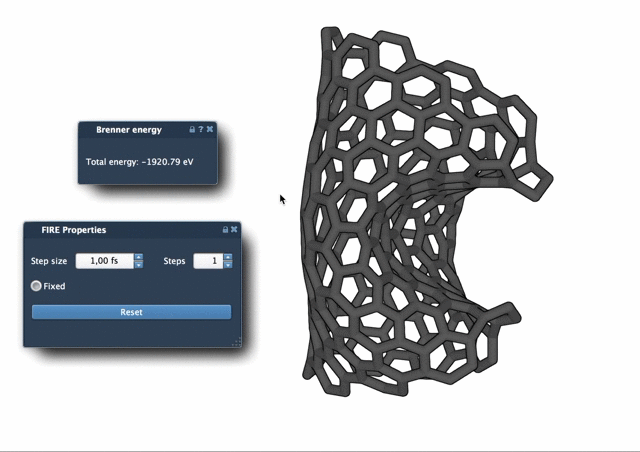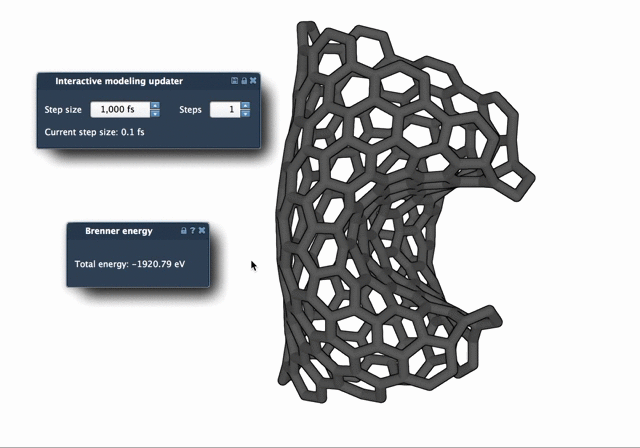One of the subtle but recurring challenges in molecular modeling is achieving a structure that is not only plausible but also energetically stable. Whether you’re preparing a system for a simulation, refining a molecular model from experimental data, or prototyping a new compound, geometry optimization can make or break your results. And yet, many modelers still rely on slow, outdated methods for this crucial step.
This is where the FIRE minimizer in SAMSON comes into play. FIRE stands for Fast Inertial Relaxation Engine, a technique originally introduced by Bitzek et al. to accelerate geometry optimization without compromising accuracy. Let’s explore when and why FIRE can save you time and improve your modeling workflow.
Why Does Geometry Optimization Take So Long?
Traditional approaches like steepest descent are simple to implement but slow to converge, especially when dealing with large-scale motions or collective atomic rearrangements. These are common in real-world systems, such as flexible organic molecules, protein loops, or solvent-exposed interactions.
The problem with steepest descent is that it takes small, cautious steps toward the minimum energy configuration, even when the path is relatively smooth. This inefficiency becomes more visible in systems that are already near a local minimum but still need refinement.
FIRE: A Better Way to Relax
FIRE minimizes the molecular geometry by incorporating inertia into the process. It accelerates the atoms along essentially the same forces used in steepest descent, but smartly varies the step size and direction using a dynamic adjustment strategy. As a result, the structure converges more quickly, especially when approaching fine details in the energy landscape.
To help visualize this, consider the following two animations from the SAMSON documentation. The difference in speed and smoothness is clear:


Is FIRE Right for You?
- If you’re minimizing a large molecular system or one that’s already close to a minimum, FIRE will likely reach the optimal structure faster.
- If you’re conducting pre-simulation cleanup or stabilizing imported models, FIRE helps you get there with fewer steps.
- If your molecular design workflow relies on periodic geometry optimizations (e.g., docking, NMR refinement), FIRE integrates smoothly as a state updater in SAMSON.
Tips for Effective FIRE Usage
Here are some practical suggestions when using FIRE within SAMSON:
- In the simulator settings, consider increasing the number of Steps between viewport updates to make smoother, more visible structural transitions.
- If you’ve manually moved atoms during minimization and want to reset the internal state, use the Reset button to clear history.
- Combine FIRE with other extensions like Molecular Restrainer for workflows that require custom constraints or experimental structure correction.
Geometry optimization doesn’t have to be a bottleneck. With FIRE in SAMSON, you can improve both the accuracy and speed of your modeling work—especially helpful for large or complex systems that demand real-time adjustments.
To learn more, visit the complete tutorial at https://documentation.samson-connect.net/tutorials/fire/ready-set-fire/.
SAMSON and all SAMSON Extensions are free for non-commercial use. You can download SAMSON at https://www.samson-connect.net.





